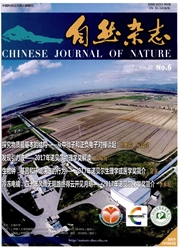

 中文摘要:
中文摘要:
作者对青藏高原红原泥炭沉积的AMS放射性碳测年及孢粉分析,揭示了青藏高原东北缘13500年以来高山湿地生态系统的变化历史。孢粉的百分含量及其通量的变化显示了研究地区植被经历了三个主要阶段.从13500~11500cal.aBP高山针叶林一草句到11500~3000eal.aBP高山针叶林植被景观.3000eal.aBP至今又回到高山针叶林一草甸植被景观。这一记录反映了研究地点主要受西南季风的影响,并与山宝洞和董哥洞石笋记录有相似的气候变化趋势,而与青海湖的记录趋势不一致。这种差异是由西南季风和东亚季风的相对贡献不同导致的。
 英文摘要:
英文摘要:
A pollen record with AMS radiocarbon dates from the Hongyuan peatland reveals the long-term dynamics of an alpine wetland ecosystem on the northeastern margin of the Tibetan Plateau over the last 13500 years. Changes in pollen assemblages and influxes suggest that local vegetation has experienced three distinct stages, from alpine coniferous forest -meadow (13500 - 11500 cal. a BP), through alpine coniferous forest (11500-3000 cal. a BP), back to alpine coniferous forest -meadow (30130 cal. a BP -present). This record reflects this study area is mainly influenced by the South Asian monsoon. The pollen record from the Hongyuan peatland is broadly consistent with oxygen isotope records from Donge and Shanbao caves, and highlights differences between Holocene climate histories at Lake Qinghai. The most obvious cause for such variability is the relative contributions made by the South Asian and East Asian monsoon systems.
 同期刊论文项目
同期刊论文项目
 同项目期刊论文
同项目期刊论文
 Tree-ring based PDSI reconstruction since 1853 AD in the source of the Fenhe River Basin,Shanxi Prov
Tree-ring based PDSI reconstruction since 1853 AD in the source of the Fenhe River Basin,Shanxi Prov Trace-element variations in an annually layered stalagmite as recorders of climatic changes and anth
Trace-element variations in an annually layered stalagmite as recorders of climatic changes and anth Drought variations in the middle Qilian Mountains, northeast Tibetan Plateau, over the last 450 year
Drought variations in the middle Qilian Mountains, northeast Tibetan Plateau, over the last 450 year Tree ring based precipitation reconstruction in the south slope of the middle Qilian Mountains, nort
Tree ring based precipitation reconstruction in the south slope of the middle Qilian Mountains, nort Spatiotemporal relationship between temperature and precipitation in inland China from meteorologica
Spatiotemporal relationship between temperature and precipitation in inland China from meteorologica 期刊信息
期刊信息
